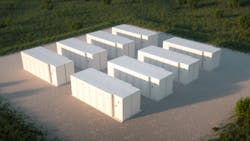Energy Storage Association: Now is the Time for Storage ITC
More than 700,000 utility customers remain without power more than a week after Hurricane Ida barreled through Louisiana and parts of Mississippi, damaging homes and critical facilities while knocking out more than 2000 miles of transmission needed to deliver electricity to the region.
This came a week after Tropical Storm Henri dumped nearly two inches of rain on New York City in a single hour and flooded communities along the coast of New England, causing power outages to more than 120,000 homes. The remnants of Hurricane Ida topped that record, dropping over 3 inches of rain on New York City and shutting down key infrastructure. Both incidents come amidst a year already marred by days-long, statewide outages in Texas, during an unprecedented period of freezing temperatures, and recurring power shut-offs across California in an attempt to forestall the worst wildfires in recent history.
Yesterday’s infrastructure cannot deal with tomorrow's weather. We need to eliminate carbon-emitting power sources to blunt the long-term climate drivers of extreme weather. And we also need to make our homes, businesses, and electric grids more resilient to those extremes.
Most power grids are ill-equipped to confront mounting climate challenges. For example, Hurricane Ida took out all eight transmission lines that carry electricity into New Orleans; Entergy, the principal utility in the area, anticipates weeks before power is restored for most customers. If onsite energy storage, solar, and microgrids had been installed at critical facilities throughout southern Louisiana, they could have enabled continuity of key services during the storm and would have been operating immediately afterward for community benefit, unconstrained by fuel shortages. Importantly, energy storage assets can continue helping well after a disaster has passed.
Take Downey Unified School District in California for example, where ENGIE Storage is installing battery energy storage systems that will cut millions of dollars off the school district’s electricity bills by reducing spikes in electricity usage while also making sure air conditioning and ventilation stays on in the classroom during extreme temperatures.
Energy storage technologies keep the lights on during extreme weather events while enabling a cleaner power system comprised of far more wind, solar, and hydropower. American companies have led the world in large-scale battery installation for homes and businesses, directly on the power grid, and integrated into wind and solar energy facilities. Other storage technologies, like thermal storage in buildings, flow batteries in substations, liquid air storage paired with generators, and renewable power-to-gas hydrogen offer opportunities for even longer durations that can further diversify our sources of power system reliability without adding to carbon pollution.
The U.S. energy storage industry has grown up fast, with recent reports showing nine consecutive quarters of increasing deployment in the power system. Companies in the U.S. are on track to install 12,000 MWh of new storage capacity in 2021, enough to power 1.5 million homes through daily peaks and three times the amount added in 2020. Nevertheless, this pace of storage deployment is still much slower than what is needed to equip vulnerable communities for resilience to increasingly extreme weather and meet President Biden’s goal of decarbonizing the power system by 2035.
Congress has an immediate opportunity, through an energy storage Investment Tax Credit (ITC), to speed storage installations that enable greater deployments of wind, solar, and hydro power while mitigating catastrophic power outages. ITCs have long been an effective policy for driving down technology costs associated with solar power and other clean energy technologies.
With bipartisan support from leaders like Senators Martin Heinrich and Susan Collins and Representatives Mike Doyle, Earl Blumenauer, and Vern Buchanan, storage ITC legislation is a common-sense way to accelerate cost declines in storage technologies that can bolster some of the country’s most vulnerable communities.
Congress must ensure the nation’s power infrastructure is capable of meeting 21st century needs and avoids catastrophic outages like we’re seeing now in Louisiana. An ITC that makes energy storage more accessible creates a cleaner and more reliable grid and gives Americans greater control over their fate.
About the Author
Jason Burwen
Jason Burwen is the CEO of the U.S. Energy Storage Association (ESA), the leading voice for energy storage companies in the U.S.
